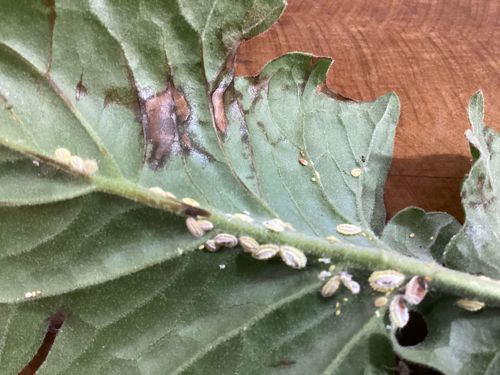Whitefly nymphs/pupae (possibly Sweetpotato Whitefly)
Scientific Name: Bemisia tabaci (or other Aleyrodidae species)
Order & Family: Hemiptera (Order), Aleyrodidae (Family)
Size: Nymphs: 0.2 mm - 0.8 mm; Adults: 1-2 mm

Natural Habitat
Found on the undersides of leaves of a wide variety of plants, both indoors and outdoors, particularly in warm climates or greenhouses.
Diet & Feeding
Plant sap. Both nymphs and adults feed by inserting their piercing-sucking mouthparts into the phloem vessels of plants and extracting sap.
Behavior Patterns
Whiteflies typically reside on the undersides of leaves. The life cycle consists of egg, four nymphal instars (the last of which is often called the 'pupal' stage, though they are hemimetabolous and do not undergo complete metamorphosis), and adult. Nymphs are sessile and flat, covered in a waxy secretion, as seen in the image. Adults are small, white, moth-like insects that fly when disturbed.
Risks & Benefits
Risks: Whiteflies are significant agricultural pests. They cause direct damage by sap feeding, leading to stunted growth, wilting, and yellowing of leaves. They also excrete sticky honeydew, which promotes the growth of black sooty mold that reduces photosynthesis and mars produce. Furthermore, whiteflies are notorious vectors of numerous plant viruses, causing widespread crop losses. Benefits: No known significant benefits, they are almost exclusively considered pests.
Identified on: 9/22/2025